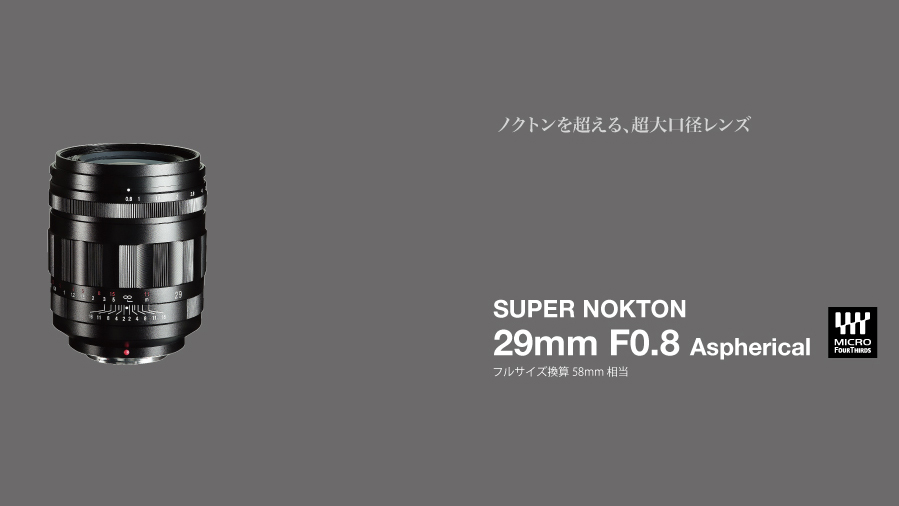World's fastest production lens! Voigtländer 29mm f/0.8 coming December
Voigtländer Super Nokton 29mm f/0.8 Aspherical has arrived for Micro Four Thirds mount

UPDATE 17/11: The Voigtlander Super Nokton 29mm f/0.8 Aspherical lens for Micro Four Thirds has been announced, officially making it the world's fastest photographic lens. While photographers will enjoy the beautiful depth of field that this lens will create (equivalent of f/1.6 on a full frame lens), the Voigtlander 29mm f/0.8 also features a stepless aperture ring that's perfect for videography.
This lens has a minimum shooting distance of 0.37m and a focal length of 29mm, which is equivalent to 58mm in full frame terms. It weighs 703g and has a filter size of 62mm. Preorders for the Voigtlander Super Nokton 29mm f/0.8 Aspherical lens will open in December, with this super fast lens retailing for around $2,000.
ORIGINAL STORY:
Buckle up your safety belt and hope that the airbags deploy – an f/0.8 lens is on the way from Voigtländer, and it will be the world's fastest lens currently in production.
There are plenty of lighting-fast lenses on the market, such as the Fujinon XF 50mm f/1.0 WR, Mitakon Speedmaster 50mm f/0.95, and of course Voigtländer's own existing range of f/0.95 lenses. However, the upcoming Voigtländer Super Nokton 29mm f/0.8 Aspherical will leave them all eating its dust.
Yes there have been faster lenses in the past, like the Carl Zeiss Super-Q-Gigantar 40mm f/0.33 publicity stunt. However, the fastest lens you can actually buy today is the Kipon Ibelux 40mm f/0.85 Mark II – though it's hardly renowned for its quality.
The Voigtländer Super Nokton 29mm f/0.8 Aspherical, then, will be a hair faster than the Ibelux – and being that it's a Voigtländer optic, it's sure to possess better image quality as well.
Get the Digital Camera World Newsletter
The best camera deals, reviews, product advice, and unmissable photography news, direct to your inbox!
The lens was leaked by renowned Japanese rumor monger Nokishita, noting that it "will be announced soon" for the Micro Four Thirds mount – and the speed alone will surely make it a must-have lens for Olympus, Panasonic and Blackmagic users.
Of course, the rub is that while this aperture will give you f/0.8 of light gathering capability, the depth of field is dictated by the crop factor (as is the case on all crop sensors, whether they're Micro Four Thirds or APS-C). So just as you multiply the focal length by the x2 crop, you also multiply the aperture to get the equivalent depth of field.
This means that the new lens will have an effective behavior of a 58mm f/1.6 optic, in 35mm / full frame terms (but, as noted, will still capture as much light as a true f/0.8 lens – only the depth of field is affected).
Read more:
Best Micro Four Thirds lenses: lenses for Olympus and Panasonic
Fujinon XF 50mm f/1.0 WR review
Mitakon Speedmaster 50mm f/0.95 review

James has 22 years experience as a journalist, serving as editor of Digital Camera World for 6 of them. He started working in the photography industry in 2014, product testing and shooting ad campaigns for Olympus, as well as clients like Aston Martin Racing, Elinchrom and L'Oréal. An Olympus / OM System, Canon and Hasselblad shooter, he has a wealth of knowledge on cameras of all makes – and he loves instant cameras, too.
